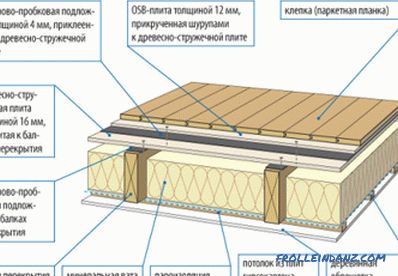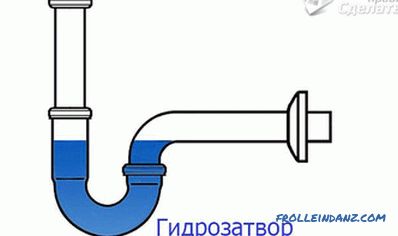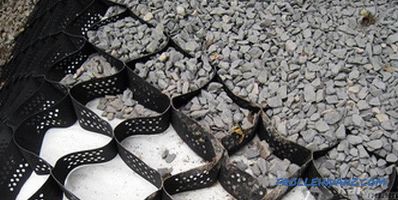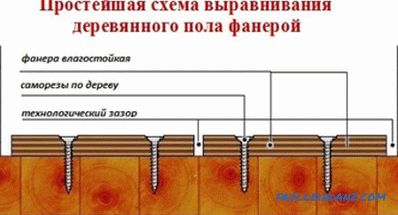At that time, when a blizzard howled outside the window and a frost rattles, I want the home to be comfortable and cozy. And if the apartment is warm and does not blow out of any of the slits, you can enjoy watching the snow falling through the window. The optimum temperature in the room, the absence of dryness, peace and quiet - what could be more pleasant in the cold winter. But all this can provide TechnoNIKOL - insulation, the technical characteristics of which can solve all the problems of insulation. This domestic material, produced by the company of the same name, came to taste to many consumers.
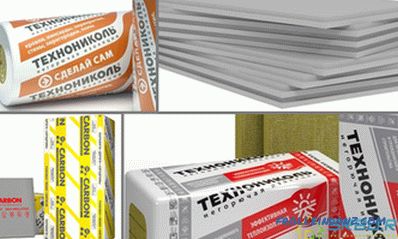
Meet: products of the company TechnoNIKOL
This company, currently standing in the same row with the largest European manufacturers (more precisely, one of the five largest of them) , produces not only thermal insulation. She manufactures the following products.
Materials for roofing:
- Tiling;
- roofing material;
- membranes made of polymeric materials;
- primers;
- mastics.
Insulation:
- Extruded polystyrene foam;
- mineral (basalt) wool, made in the form of plates.
Basalt wool: composition and features
The finest stone fibers of this material consist of processed gabbro-basalt rocks. Between these fibers contains a large number of air layers. As a result, the level of thermal insulation of the material is simply excellent. After all, it is no secret that it is the air, being without movement, that has great resistance to heat transfer.
But this is not all the advantages of insulation - it is good not only in frost, but also in case of a critical rise in temperature. Such a characteristic of mineral wool TechnoNIKOL as fire resistance is very impressive. This material does not burn, quietly maintaining the temperature even at 1000 degrees Celsius. At the same time, it does not even melt! Even if, unfortunately, a fire happens, the basalt wool will save your house, without letting the walls and ceilings collapse. It will block the path to the fire, in the event of a fire without emitting a single drop of harmful substances.
- For more information on the characteristics of basalt wool insulation, see the article: Technical characteristics of basalt insulation, advantages, disadvantages and scope of application.
Extruded polystyrene foam TechnoNIKOL
This type of material is increasingly used for insulation of houses both in our country and abroad. After all, he is very well kept warm. For example, to achieve an equivalent effect, you need to take a layer of wood 10 times thicker than expanded polystyrene (twenty centimeters versus two). So EppS is cheaper. Yes, and it is much easier than other heaters, and this reduces the cost of transportation and facilitates installation. Durability and rigidity allow to use it where softer heat insulators cannot cope. Here only this material is afraid of fire - it not only burns, but also emits toxic substances. So it is necessary to comply with fire regulations, providing adequate protection.
Types of TechnoNIKOL materials and their technical characteristics
Basalt cotton wool TechnoNIKOL
1. Rocklight - is a slab of basalt fibers. Low phenolic resin is used as a binder. This increases the environmental friendliness of the material, which undoubtedly pleases the consumer. This insulating material is non-flammable, moisture resistant, and it keeps warm remarkably. Used for thermal insulation of private houses. They can isolate both horizontal and vertical or angled structures. For example, the walls of the attic, frame houses, sheathed with siding, floors and floors. The loads are assumed to be not very high.
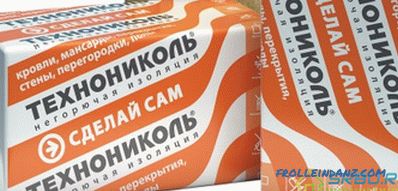
2. Teprolol are long stone wool mats wound into rolls with good sound insulation properties. They also do not burn, do not get wet and have a low content of phenol. They are well insulate roofing ramps, walls of attic space, floors between floors and floors. In addition to protection from the cold, they protect against noise well.
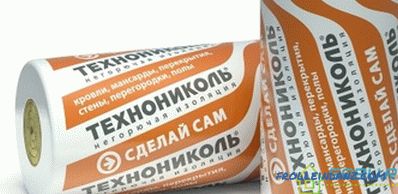
3. Technoacoustics - as it becomes clear from the name, it is intended for sound insulation purposes. This non-combustible and moisture-resistant basalt fiber wool, arranged in a special way. Due to their location, the material is able to delay up to 60 decibels of noise. It is used for sound insulation of frame-sheath type partitions, suspended ceilings and ceilings, which are not supposed to be heavy loads. And this insulation will be good in the apartment, in the house, and in the office space. And for soundproofing a club or restaurant, it is just the perfect option.
Sound absorption class with a total thickness of the insulation layer:
- 50 mm - 212 NSA
- 100 mm - 211 NSA
- 150 mm - 211 NSV
- 200 mm - 111 NSV
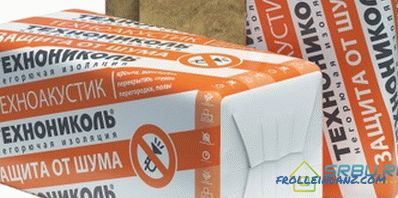
4. The technoblock is a low phenolic plate, which, like the previous materials, is not afraid of fire and water, and also saves from extraneous noise. They are used to preserve heat and absorb sounds in layered masonry, frame and siding walls.
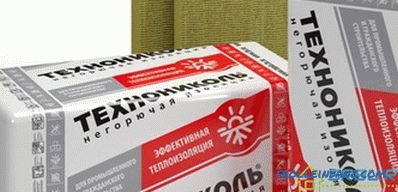
Table of technical characteristics of basalt cotton wool TechnoNIKOL
| Parameters | Rocklight | Teplonor | Technoacoustics | Technoblock |
|---|---|---|---|---|
| Thermal Conductivity at 10 0 С, (W / m · С) | 0.039 | 0.036 | 0.035 | 0.035 |
| Water vapor permeability, not less than, mg / (m · h · Pa) | 0.3 | 0.3 | 0.3 | 0.3 |
| Water absorption by volume, not more, (%) | 2.0 | 2.0 | 1.5 | 1.5 |
| Density (%) | 30-40 | 25-35 | 38-45 | 40-50 |
| Flammability (degree) | NG | NG | NG | NG |
| Szhi capacity, not more than (%) | 30 | 55 | 10 | 8 |
Extruded polystyrene foam TechnoNIKOL
1. XPS TECHNONICOL CARBON ECO is a series of heaters designed for use in the construction of cottages and houses with a small number of floors.
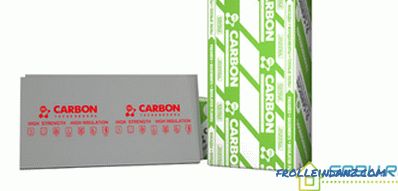
2. XPS TECHNONICOL CARBON ECO DRAIN - polystyrene foam plates with special drainage grooves. It is used to organize the drainage of the foundation, as well as flat roofs. In the latter case, the drainage grooves contribute to improved ventilation. And with the isolation of the basement, rain and drainage water outflow occurs through them.
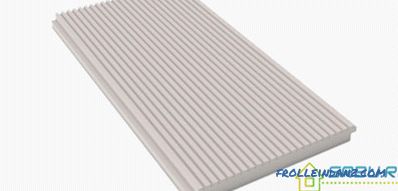
3. XPS CARBON ECO FAS TECHNONICLE - used for decorating plastered facades and basements of houses. Outside, its plates are processed using milling, so the material has excellent adhesion with any surfaces.
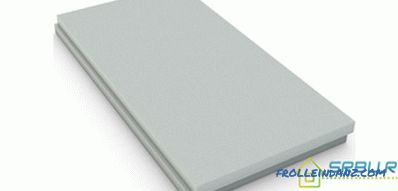
4. TECHNONICOL CARBON ECO SP is a unique material designed to isolate foundations made using a special technology called the “insulated Swedish plate”. This foundation also includes communication. It even includes a floor heating system. Insulation ECO SP has a high rigidity, constant geometric dimensions and low thermal conductivity. No other enterprise produces the second such material in Russia.
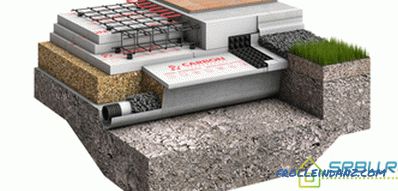
In addition to extruded polystyrene foam, intended for amateurs, the company Tehnonikol also produces professional insulation. These include the following materials:
1. СARBON PROF is a heat insulator with high strength. At the same time, such a characteristic of the technonicol insulation of this type, as the density is reduced. Specialists usually work for them, warming the roofs of shopping centers, transport and logistics and warehouse complexes, residential and office buildings. They isolate the roof, which are under load, as well as various foundations and floors on the ground.
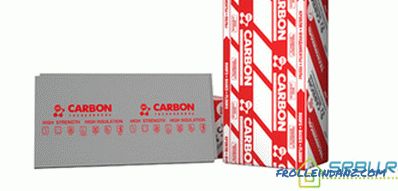
2. СARBON PROF SLOPE - differs from the previous material in that it is a whole set of five plates with which you can make an inclined surface. They have letter designations meaning bias. Thus, plates A and B have a slope of 1.7 percent, plates J and K - twice as large a slope (3.4 percent). And at the plate M the slope is 8.3 percent. Their thickness is 4, 8 and 7 centimeters.
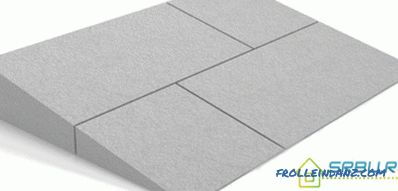
3. Hard CARBON SOLID material is very durable due to the huge number of closed cells evenly spaced. They can isolate highways, railways, floors, carrying a heavy load. XPS TECHNONICOL CARBON SOLID does not deform, does not swell from water (as it does not absorb it), does not rot and reacts to chemical reagents. Thermal insulation from it serves for a very long time without being subjected to destruction.
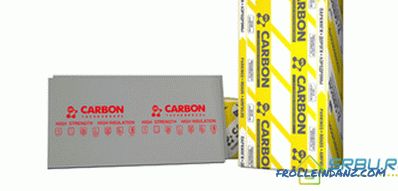
4. XPS plates TECHNONICOL CARBON SAND - are produced specifically for inserting sandwich panels in the middle of heat-insulating sandwich panels.
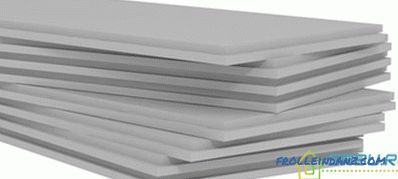
5. Extruded polystyrene, made in the form of plates TECHNONICOL C-XPS CARBON , is used to repair and rebuild houses, as well as to warm the floor, made with a dry screed.
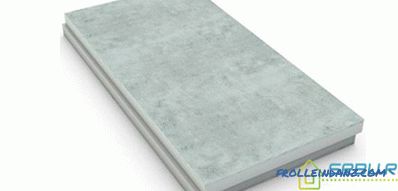
Table of technical characteristics of various types of expanded polystyrene TechnoNIKOL
| Stamps | Teploprov. at (25 ± 5) 0С, W / (m * K) | Flammability group | vapor permeability, mg / (m h.Pa) | Flexural strength MPa | Density kg / m3, not less than | Operating temperature, o C |
|---|---|---|---|---|---|---|
| CARBON ECO | 0.029 | G4 | 0.011 | 0.25 | 26-32 | from - 70 to + 75 |
| CARBON ECO SP | 0.029 | G4 | 0.011 | 0.30 | 26 - 32 | from - 70 to + 75 |
| CARBON ECO DRAIN | 0.029 | G4 | 0.011 | 0.25 | 26 - 32 | from - 70 to + 75 |
| CARBON ECO FAS | 0.029 | G4 | 0.011 | 0.25 | 26 - 32 | from - 70 to + 75 |
| CARBON PROF | 0.028 | G4 - G3 | 0.010 | 0.35 - 0.40 | 28 - 36 (depending on the variety) | from - 70 to + 75 |
| CARBON PROF SLOPE | 0.028 | G3 | - | - | 28 | from - 70 to + 75 |
| CARBON SOLID | 0.031 - 0.035 | G4 | 0.005 | 0.7 | 36 - 60 (depending on the variety) | from - 70 to + 75 |
| CARBON SAND | 0.030 | G3 / G4 | 0.010 | 0.30 - 0.70 | 28 | from - 70 to +75 |
| C-XPS CARBON | 0.0332 / 0.0337 / 0.0344 / 0.0345 | G1 | 0.01 | 1 | - | from - 70 to + 75 |
Video: Application of polystyrene insulation TechnoNIKOL
